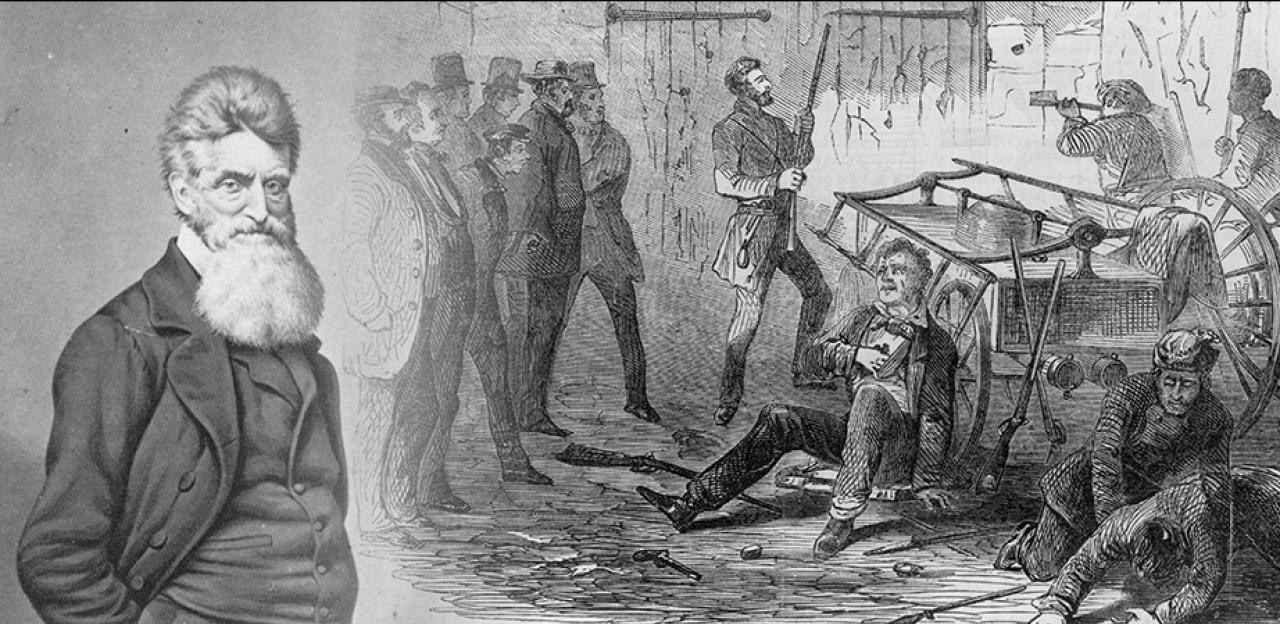Disunion 1860: Traditional High School Lesson Plan

Grades: High School
Approximate Length of Time: 90 minutes
Goal: Students will be able to assess and explain the causes of the American Civil War.
Objectives:
- Using primary and secondary sources, students will be able to analyze events, motivations, conditions and actions leading up to the Civil War.
- Using primary and secondary sources, students will be able to identify and give examples of major compromises that permitted or restricted slavery in relation to territorial expansion.
- Students will be able to compare and contrast the cultures and economies of the Northern and Southern states.
Common Core Standards:
CCSS.ELA-LITERACY.RH.11-12.1
Cite specific textual evidence to support analysis of primary and secondary sources, connecting insights gained from specific details to an understanding of the text as a whole.
CCSS.ELA-LITERACY.RH.11-12.7
Integrate and evaluate multiple sources of information presented in diverse formats and media (e.g., visually, quantitatively, as well as in words) in order to address a question or solve a problem.
NCSS Standards for Social Studies:
1—Culture
2—Time, Continuity, and Change
3—People, Places, and Environment
5—Individuals, Groups, and Institutions
6—Power, Authority, and Governance
10—Civic, Ideals, and Practices
Materials:
- National Expansion Map
- Compromise Scenario Cards (2-3 copies)
- Compromise Notes Sheet
- Comparing the North and South
- Disunion PowerPoint
- Thomas Jefferson’s Letter to John Holmes
- The National Archives Document Analysis Form
ANTICIPATORY SET/HOOK:
Discuss with students the causes of war. How can disagreements be settled so that they do not lead to war? Briefly review and comment on suggestions.
Add “compromise” if not suggested during brainstorming, and have students define the term before asking students to identify the benefits and drawbacks of compromise and provide examples of compromises that they have made. What might happen if a compromise doesn’t work or people change their mind? (Compromise—An agreement or a settlement of a dispute that is reached by each side making concessions.)
Explain that in the 1800s the United States was growing from the original 13 colonies and adding new states and territories at a rapid pace. Citizens had varying ideas about how the land should be settled, either with free labor (define, if necessary) or with slave labor. The debate expanded to the question on how the idea of slave or free labor be chosen—through popular sovereignty (vote of the citizens of the territory), through compromise, or by the federal government. (Free Labor—Although the term might suggest the same meaning, the word "free" had nothing to do with bondage or working for no wage, but rather indicated concepts of freedom, independence, and self-reliance.)
- Watch The War Between the States In4 until the 2:19 mark.
- Watch Kansas in the Civil War until the 1:00 mark.
- Watch The Coming of the War In4.
Procedure:
Print out the PowerPoint with notes prior to class. There are notes included with the slides that can be on the printed slides but won’t be seen by your students during the presentation.
Print out copies of the Compromise Scenario Cards, cut them out, and place them in a hat. You will use these throughout the lesson.
Activity 1
- Hand out the National Expansion Map, have students follow the directions and answer the question.
- Hand out the Compromise Notes Sheet and Comparing the North and South.
- Explain: Throughout the PowerPoint presentation scenarios will be read and discussed; after each scenario, they will:
- Fill out the Compromise Notes Sheet, taking a Scenario Card from the hat and noting the person in each scenario’s particular interests.
- Use Comparing the North and South as a reference to help them develop their answers.
- Follow the Disunion PowerPoint and associated notes throughout the lesson.
Closure:
Students will complete the essay. This is not included in the time allotted for the lesson. Students may need additional access to research materials to make a strong argument. Students and teachers can utilize our “Additional Teacher and Student Resources” section below.
Assessment in This Lesson:
- Informal assessment through discussions related to the personas and the compromises
- Completed Compromise Sheet
- Completed National Archives Document Analysis form
- Completed final Essay
ADDITIONAL TEACHER AND STUDENT RESOURCES::
- Glossary of 18th and 19th Century Political Terms
- Glossary of Civil War Terms
- National Archives Document Analysis Worksheets
- Trigger Events of the American Civil War
- The Missouri Compromise
- The Nullification Crisis
- The Wilmot Proviso
- Bleeding Kansas
- The Caning of Charles Sumner
- The Lincoln-Douglas Debate
- John Brown’s War
- The Gathering Storm Video
- Primary Document Collection
- Virginia Center for Digital History (For Virginia SOL’s, but useful for other states.)


